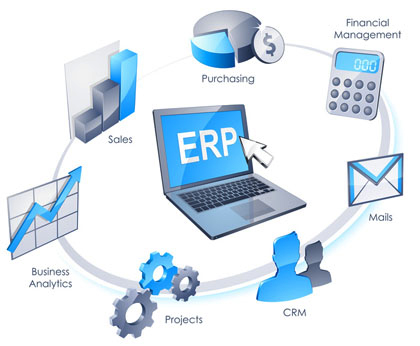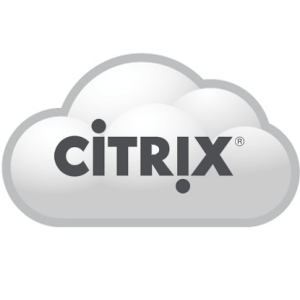7 Tips for Leveraging Enterprise Software for Businesses

In today’s evolving and challenging business climate, industries are facing escalating competition, cost cuts, digital transformation, and aging assets, necessitating a fact-based acceleration toward enterprise software. Employing this software promotes efficient change management, the ability to leverage big data, the capacity to produce smarter business decisions, and the potential to streamline processes for reliable financial and operational performance. Upgrading or implementing new enterprise software addressing standard IT models is unrealistic in most situations. However, prioritizing high-ROI capabilities and critical, problem-solving methods facilitates and understanding of the software computations is essential for identifying solutions.
Identifying Clear ROI Paths
Business leaders must identify a clear path toward a positive return on investment before assuming the risks of implementing new enterprise software. Various performance technologies can achieve a high ROI by creating, enhancing, or preserving a competitive edge for the organization. Numerous corporations effectuate market profits through purposeful, strategic, and sound planning and execution of project objectives. Expanding organizations frequently lack the support to establish complex IT infrastructures. Accordingly, operating lean requires implementing scalable, robust, and creative software solutions. Here are seven tips businesses can employ to leverage enterprise software and maintain their competitive edge:
Manage projects as business transformation initiatives. The goal of this change leadership approach is aligning technologies, processes, and people initiatives with visions and strategies. Managing projects as business conversions instead of straightforward technology updates reduce the odds of failure. On the other hand, the more successful companies start with processes, people, and strategies, and then align it with their IT tactics to incorporate organizational change, ERP systems initiatives, and business process re-engineering.
1:- Perform a gap analysis
Performing a gap analysis after documenting current and ideal capabilities establishes the position for new or upgraded software. A four-step analysis examines the impacts on performance management, people, technology, and business processes. Key considerations include determining employee engagement, improving business processes, empowering workers and methods, and measuring KPIs.
2:- Re-engineer critical business processes
All business processes vary, requiring an organizational restructure to focus on decisive workflows that are requisite for business success and that provide a competitive advantage. This approach facilitates concentrating efforts, value, and resources around areas with significant impact to deliver comprehensive benefits. The current innovative and evolving technological environment creates a necessity to leverage business enterprise systems and maintain an aggressive edge.
3:- Identify ideal IT capabilities
Rule out unfit software solutions to distinguish the core IT capabilities that best meet corporate needs. This strategy ensures a focus on the leading contenders by analyzing critical IT capacities based on people, processes, technology, and metrics. These functions include the culture and degree of leadership necessary to manage the transition holistically, facilitate smarter decisions, standardize global and local processes, and enable performance.
4:- Project business value
A quintessential measure of value includes predicting and illustrating the return on investment based on expected performance enhancements. Actions may involve forecasting and estimating employee empowerment, long-range ROI culture, and comprehensive software architectural integration. Establishing critical processes such as preparing a continuous improvement guideline is beneficial for monitoring implementation effectiveness over time and the number of resources necessary.
5:- List strategic goals first
Aligning multiple business transformation initiatives is achievable by clearly defining the big-picture strategic goals. Typically, embarking on IT and enterprise strategic initiatives with clients begins by envisioning a procedural articulation map to identify inherent objectives and translate them into a more specific process, operation, people, and technology initiatives for driving those goals.
Choosing the right enterprise software solution and building a business case that supports it is not a straightforward or simple task. To learn more, access guidelines from Keith Krach designed to equip senior leadership and executives with the requisite knowledge to adequately develop a robust industry outline for determining the best fit for enterprise software.
6:- Leveling the Playing Field
The rise of enterprise software for businesses contributes to leveling the playing field for all company sizes. It affords them with the opportunity to leverage high-quality, cost-effective, flexible, and scalable applications. Implementing the systems are crucial for managing the complex activities, IT functions, and the digital processes businesses frequently undertake. Consequently, relevant enterprise applications allow for organization-wide supply chain management, business intelligence, human resources, customer relationships, and analytics. Small- and medium-sized business owners are embracing the power of enterprise software to drive efficiency, enhance productivity, sharpen agility, and promote profitability.
7:- Understanding the Significance of the Digital Shift
Whether employing predictive analytics to provide a better understanding of clients’ needs or streamlining business processes with machine learning, the enterprise software industry is encountering a significant digital shift. Where businesses once stored information in data warehouses, they now utilize content management systems with the capacity to drive generate profits, stimulate growth, and produce success. Enterprise software for business fuels industries by empowering marketing and sales teams to align business goals. In the end, it equips them with the best data analytics to realize greater customer insight.






